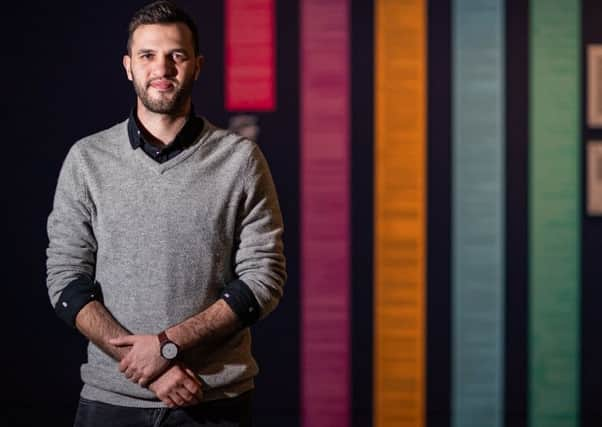Art meets technology at Bradford's National Science and Media Museum


In our increasingly interconnected world of smart technology, many of us are seldom parted from our screens and devices, whether at home, at work or in transit.
Today, the number of internet connected devices on our planet is greater than the number of people on earth. That is a pretty scary statistic – and it is one that has partly inspired the latest exhibition at the National Science and Media Museum in Bradford.
Advertisement
Hide AdAdvertisement
Hide AdNever Alone: What Happens When Everything is Connected?, which opened recently, looks at the impact such devices have had on communication, lifestyle, security, entertainment and health. Consideration of the long-term implications of smart technology encroaching on all areas of our lives is really only just beginning; the exhibition – part of the museum’s ‘hot topics’ strand and following on from last year’s Fake News: The Lies Behind the Truth – aims to be part of that conversation. “Our ‘hot topics’ strand allows us to give a kind of ‘rapid response’ to issues that are in the media,” explains curator Dr Sarah Rawlins. “We want to help people understand what is going on in the world and we take a slightly more provocative line with these shows than with our other exhibitions. What we are trying to do with this is to pose questions and get people to think about their relationship with technology.”
The exhibition explores five subject areas – biometrics, surveillance, objects that relate to tracking and smart homes. The final section ‘Bias’ looks at the way in which devices can reflect the values – and prejudices – of their human programmers and developers. The idea is to inform people and prompt them to give some thought to the issues so they can make informed decisions about their future behaviour. “We really don’t want to scare people,” says Rawlins. “There are plenty of examples of good use of smart technology but we want people to think about issues around privacy and surveillance, for example, and ask themselves how much privacy they are willing to give up in order to feel safe.” One of the pieces in the exhibition is Dima Yarovinsky’s artwork I Agree – an installation of printed terms and conditions of service that users have to sign up to. How many of us actually read those? Well, exactly.
Yarovinsky’s artwork displays the T&Cs for a Fitbit activity tracker and it speaks very eloquently of our ignorance about what we are effectively signing up for – pretty unlimited access to our personal data. I Agree is 9.5m long and made up of impenetrable legal jargon. “If you want to understand all that and read it all, you have to have a lot of time and patience,” says Yarovinsky. “All of those companies know that, so they give you the option to just click to agree. I think what’s most interesting about this work is that when you see it in real size it is about four times bigger than you.”
Other exhibits on display include internet connected children’s toys, CCTV equipment, security webcams, shown alongside historical objects from the museum’s extensive collection such as 19th century wearable cameras. “What we wanted to do was put the exhibits in to some sort of historical context,” says Rawlins. “So for example we have paired Fitbits with a time and motion camera from the early 20th century which were used to track people at work. We want to show that some of the issues we are facing today are not new.”
At the National Science and Media Museum, to February 10.